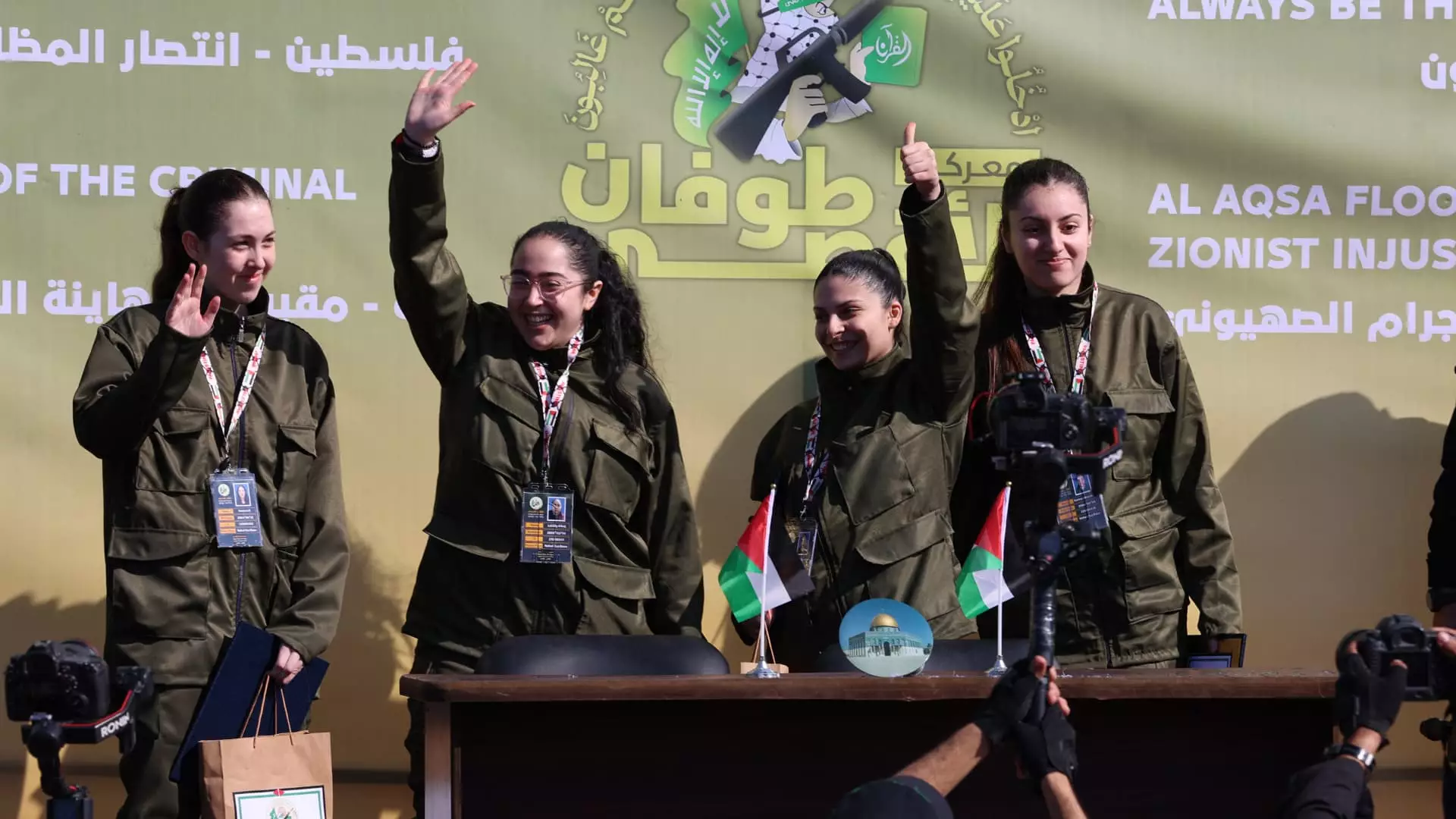The recent hostage exchange between Hamas and Israel marks a significant development in the protracted Gaza conflict, which has now entered its 15th month. This exchange, orchestrated in the context of a ceasefire agreement, saw four female Israeli soldiers—Karina Ariev, Daniella Gilboa, Naama Levy, and Liri Albag—returned to Israel in exchange for 200 Palestinian prisoners. Such exchanges have become a focal point of negotiation and tension, reflecting the broader complexities of the Israeli-Palestinian conflict. As this situation unfolds, it raises important questions not only about the humanitarian implications but also about the deeply entrenched political aspirations on both sides.
The release of the four soldiers was met with overwhelming joy in Israel. Their families, witnessing the reunion on a live broadcast from a military base, cried tears of relief and exultation. Streets in Tel Aviv filled with emotion as citizens gathered at Hostages Square to celebrate the return of their loved ones. However, this joy was tempered by disappointment following the absence of another expected civilian hostage. While Israeli officials criticized Hamas for this development, claiming it violated the truce, Hamas pointed to a “technical issue.” This tug-of-war over narratives is emblematic of the deeper challenges in the quest for lasting peace, where both negotiation and miscommunication frequently surge to the forefront.
The ceasefire that facilitated this exchange was the result of extensive negotiations, primarily brokered by Qatar and Egypt and supported by the United States. This accord effectively paused hostilities for the first time since an earlier ceasefire collapsed just a week prior in November 2023. Under this agreement, Hamas had committed to releasing a critical number of hostages, including vulnerable groups such as children and the elderly, while Israel agreed to withdraw troops from certain positions in Gaza. However, the recent shortfall in the number of hostages released highlights the fragility and complexities of the agreement, with ongoing negotiations required to ensure compliance from both parties.
The backdrop of this exchange is a catastrophic loss of life on both sides, with Israel suffering the deaths of over 400 soldiers and Hamas reportedly causing the death of more than 47,000 Palestinians, many of whom are civilians. The toll of this prolonged conflict has not only shattered communities but also created deep mistrust and resentment. The Israeli government’s declaration that one-third of the remaining hostages are presumed dead underscores the harrowing reality of families torn apart, lost in the turmoil of war. Consequently, the humanitarian angle cannot be overlooked when considering the ramifications of such negotiations.
As the situation evolves, the negotiations surrounding the release of additional hostages will be critical. While the current agreement has shed light on potential pathways towards peace, both sides must navigate a minefield of political pressures, social expectations, and ongoing violence. With 90 hostages remaining, including many of military age, the pressure on both families and the government continues to mount. The pathway forward is fraught with uncertainty, especially as Israel maintains its stance on reinforced security measures against any potential breaches of the truce.
Furthermore, the fate of deported Palestinians continues to loom large. As hundreds of thousands remain displaced, negotiating their return amid ongoing violence poses a significant challenge to humanitarian and diplomatic efforts. The path to a ceasefire must not only address the immediate demands for hostages but also consider the larger framework of peace that encompasses humanitarian needs and long-term political resolutions.
The recent hostage exchange serves as a crucial moment in the intricate tapestry of the Gaza conflict. It highlights the profound human aspects intertwined with political maneuvering. As joy and heartache coexist, reaching a durable and meaningful peace will require unprecedented levels of cooperation, empathy, and understanding between two fundamentally opposed entities. Moving forward, stakeholders from both sides must prioritize dialogue grounded in compassion if there is any hope for a future where exchanges do not signal dread, but rather represent hope and reconciliation.


Leave a Reply